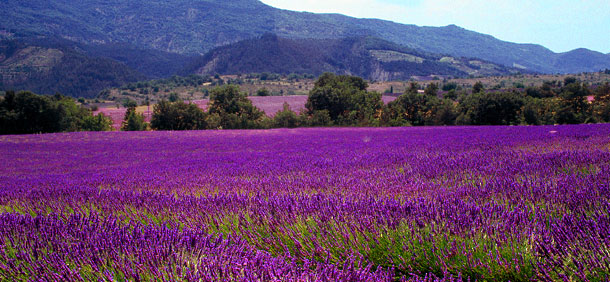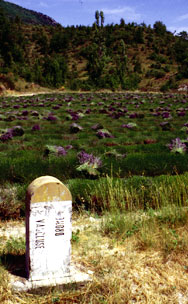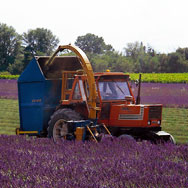- Villa search

- Canaries
- Caribbean
- Croatia, Bulgaria and Hungary
- Cyprus
- Florida
- France and Corsica
- Greece
- Italy
- Lakes and Mountains
- Madeira
- Malta and Gozo
- Portugal
- South Africa
- Spain - Balearics

Information
Lavender fields forever
Gillian Thornton caught the scent of summer and followed her nose along the lavender routes of Provence
Few scents evoke sensuous summer days in quite the same way as lavender. Just one sniff and you can feel the hot Provençal sun on your back, hear bees buzzing amongst the purple blooms, and see those vivid splashes of colour across the landscape.
It’s not surprising that the lavender growing area of Provence is a popular place to rent a holiday home during the flowering season. Not just for the sweet scented air, but for the clear light, glorious climate and some of the most unspoilt countryside in France.

Where Dr�me lavender meets Vaucluse
The area stretches from the Rhône valley in the west to the mountains of Haute Provence in the east; from the southern edge of the Vercors plateau in the north to the deep Verdon gorges in the south. Lavender is a big tourist attraction and the four départements – or counties – which share this fragrant countryside have joined together to promote the Lavender Roads of Provence.
We headed off to the département of Drôme Provençal for our sensory holiday experience and soon found that while it isn’t difficult spotting the colourful fields, reaching them can be a different matter. Some have obligingly been planted beside the main routes, but you can also wind down many
a country lane before ending up beside the butterfly-covered blooms.Locating the lavender-related attractions such as shops and soap makers, exhibitions and distillers is easy. You’ll find a wealth of historical and horticultural information on this most essential of essential oils, as well as loads of ideas for activities, on the website www.routes-lavande.com. You can also pick up a Lavender Routes leaflet and map from any local tourist office.
Whatever your interests, you’re sure to find a lavender connection. Learn how to do hand massage or cook with wildflowers, find out about essential oils or take part in a flower workshop. Join in a guided walk through the lavender fields, try your hand at watercolour painting, or have a go at perfume making. You can go horse riding, cycling, or simply explore the lavender routes from your car – windows open of course.

Harvesting outside Nyons
If you didn’t know much about lavender before you arrived, you’ll very soon learn at the shops, museums and exhibitions along the Lavender Roads. The plant originated in Persia and the Canary Islands, but it has been grown in Provence since Roman times. The Romans loved its fragrant qualities and used it for bathing and washing clothes, hence the word ‘lavender’ from the Latin ‘lavare’ meaning to wash.
In the Middle Ages, lavender was used for medicinal and hygiene purposes, and today it is widely used in aromatherapy as well, of course, as the perfume industry. For centuries, wild lavender was gathered on the hillsides by shepherds, but it wasn’t until the early 20th century that Provençal farmers began to plant it as a crop.
Two species grow wild in this area – fine or true lavender which is distilled to produce the essential oil prized by French perfume makers, and the less common spike lavender which has a strong camphor smell. But the natural cross pollination of the two varieties gives lavandin, a hardy variety widely used in the soap industry.
Not that you’re likely to worry about which variety you’re looking at when you stop to admire a lavender field in full bloom. The flowering period stretches from early June to late August, depending on species and altitude, and during these summer months you’ll spot many a holidaymaker beside the roadside, camera to the ready.
 home | destinations and editorial | villa search | property for sale | car hire | flights | services
home | destinations and editorial | villa search | property for sale | car hire | flights | services
villaseek blog | contact villaseek | links and resources | advertise your villa© Dune Root Ltd and Villaseek.com 2012 - Caribbean
- Canaries